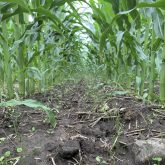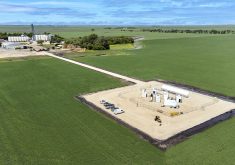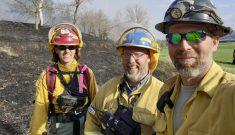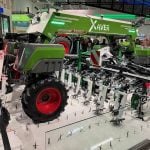Glacier FarmMedia – There is no simple solution that will allow Canadian farmers to reduce greenhouse gas emissions while continuing to grow food to help feed a hungry world, says an environmental soil scientist.
Why it matters: Taking a one-size-fits-all approach to reducing GHG emissions from agriculture will not work, according to a new report.
“It’s really complicated. That’s why I think it’s not something that we can just find a solution so easily, like a consistent solution that is going to work for everyone,” said Ymène Fouli, a research affiliate at the University of Calgary.
Read Also

New Iridium technology helps block GPS spoofing
A tiny new chip will allow Iridium’s Positioning, Navigation and Timing (PNT) signals to be received much smaller devices, create a backstop against Global Positioning Systems (GPS) spoofing.
She is the co-author of a recent report by the Simpson Centre for Agricultural and Food Innovation and Public Education at the university’s School of Public Policy. It looked at estimates and measurements of greenhouse gas (GHG) emissions from Canadian agriculture.
It said agriculture was the source of about 10 per cent of Canada’s total emissions of 729 megatonnes in 2018.
“Methane and nitrous oxide are the main GHGs that agriculture emits at 38 and 36 per cent respectively, with carbon dioxide responsible for the remaining 26 per cent,” said the report.
“GHGs arise from enteric fermentation of cattle, the application of synthetic and organic fertilizer, biomass decomposition, soil cultivation and tillage, mineralization of soil organic matter and manure, among other sources.”
Although an estimated 53 per cent of current agricultural emissions are from the livestock sector, the report said intensities decreased between 1981 and 2006, especially for beef and pork production. The decline was mainly due to more productive livestock breeds, improved management practices and better crop yields and livestock feed, it said.
However, it added some researchers have estimated that total GHG emissions from the Canadian beef sector were 28 per cent higher in 2011 than in 1981, even if intensities had declined. As a result, getting consumers to make informed choices to eat less red meat, and diversify their meat and protein choices, is seen as one way to reduce agricultural GHG emissions.
Producers could also increase production efficiencies and lower their carbon footprint by switching from single product to multi-product farm systems that integrate cropping, beef and dairy, said the report.
“As we gain better understanding of GHG emission estimates for different farm scenarios and the largest sources of GHG emissions, the next step is to target these sources and find ways to decrease them while maintaining or improving the farm’s financial stability,” it said.
“Changes will not be made if they are not cost effective and if they do not bring a positive change to a farmer’s busy life.”
Fouli said the urgency of such efforts was underlined by the record-breaking heat waves and drought that affected prairie producers last summer, followed by flooding that hit British Columbia in November.
“Well, I mean, the climate is changing everywhere and we don’t know where the next catastrophe is going to happen, and it impacts everybody. And so that’s why this is the start of a conversation that really everybody needs to have.”
The report highlighted the range of variables and models researchers must grapple with as they evaluate farming practices that can be both a source and a sink of emissions.
“Carbon footprints vary for every subsector of agriculture and assessing them is a complex effort that involves accounting for every process that occurs throughout production,” it said.
Models used to simulate agricultural operations include the Integrated Farm Systems Model, along with the Canadian model Holos. Such whole-farm emissions models aim to “find ways to target emission sources without hampering a farm’s financial sustainability and production,” said the report.
“Other models focus on simulating the productivity and impact of cropping systems on the environment, with the goal of estimating the level of emissions. Other models are used to derive management-driven soil carbon change factors.”
The widespread adoption by farmers in the Canadian Prairies of practices such as decreased summerfallow, reduced tillage and more cover crops resulted in removal of atmospheric CO2 by soils. Such carbon sequestration helped spark a decline in net GHG (emissions minus removal by soil) between 1981, when soils were a source, and 2011, said the report.
Different kinds of farms “produce varying amounts of GHGs, whether they are small animal or crop farms or large beef cattle operations … There are many options available for reducing agricultural GHG emissions, depending on the type of farm operation.”
However, what works in the dry climate and larger farms on the Prairies may not be suitable in Eastern Canada, said Fouli. Wetter conditions in the latter region frequently result in higher emissions of nitrous oxide, particularly for crops such as corn that require more nitrogen fertilizers, said the report.
Fouli said producers need to understand that “everything is regional, so understanding where you live and what the climate’s like, and what is happening in your environment, in your soils, and your business, your market … and being able to responsibly have a safe living and produce food and keep the economy going in a responsible way.”
Her report is to be followed by a second report by the Simpson Centre that will look at policies and contain recommendations.
– This article was originally published at The Western Producer.














